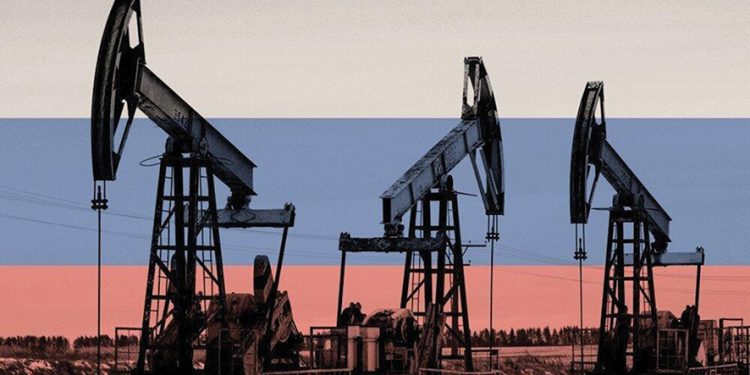Read Part 1.
As for further escalation of sanctions, the advantage is on the side of the West, and this advantage is much greater than the retaliatory measures of a vengeful Russia.
In the aforementioned escalation, the space of Western advantage is created by a wide choice of possible additional measures. Let us mention just a few of them, which we consider to be the most important:
(1) The Russian financial sector has not yet been fully and completely extinguished by the sanctions policy: in this regard, there is still room for expanding the impact on the target;
(2) The leading actor in the Western sanctions coalition, the United States, has not yet implemented the so-called secondary sanctions, which involve penalizing foreign companies for transactions with Russian state and private companies;
(3) The Western sanctions policy has not yet used the so-called “full blocking sanction,” which is explained by some conjunctural considerations;
(4) The challenge of third countries providing direct assistance to Russia to circumvent sanctions or other forms of support remains unresolved.
In addition to the general issues or considerations discussed here, several “specialized” aspects require particular attention.
The financial “duplicity” of the US dollar: challenges to dollar hegemony…
The central role of the US dollar in the international system is not only an economic factor, but also a factor related to geopolitical influences on the world stage. This is particularly evident in the context of the degree of effectiveness of sanctions, since control over financial flows is crucial to exert the necessary pressure on the object of sanctions. It has been said that “big countries manage big currencies,” which is also the basis and condition of their great geopolitical weight.
However, as a result of the post-pandemic shock, attempts to rebuild the global supply chain and the impact of the Russia-Ukraine war, due to a certain fragmentation of the world economic system, the question arose with the following formulation: Will the US dollar maintain its role as a system-connecting currency in the global economy? And while at this stage a fundamental review of the status of the US dollar and its replacement with another currency (or currencies) is not a near-term prospect (if at all), the talk that has already begun about the “influence” of the US dollar in the global monetary structure foreshadows the most extensive process since the introduction of the Euro.
As we said before, today the United States and the countries that support the central position of the U.S. dollar seem to have nothing to worry about: the US dollar is quite firmly established as the world’s reserve and settlement currency. Suffice it to note that by the end of 2022, up to 60% of central bank reserves were held in US dollars. It has also been said that the impact of one particular currency (in this case, the US dollar) is critical to the effectiveness of large-scale sanctions measures and to ensuring at least a minimum level of order based on international norms.
At the same time, signs of the struggle for the redistribution of geopolitical influence using currency and payment instruments are already clearly visible: their essence, dynamics and, in some cases, the medium-term outline are clearly recognizable.
Let us try to summarize, at least briefly, the main “threats” to the dominance of the US dollar:
(1) Chinese and Russian tenfold efforts to build their own autonomous systems in the face of sanctions as a result of the renewed Russian invasion of Ukraine.
Here we are mainly talking about payment platforms, the purpose of which should be to disconnect from SWIFT. Beijing and Moscow have taken concrete steps in this regard, although their effectiveness is still far from desirable. For a better idea, we will only refer to a few numbers. In particular, the Chinese cross-border interbank payment system makes up to 15 thousand transfers of 50 billion per day, while the US equivalent – the clearing house of interbank payment system – makes up to 250 thousand transfers amounting to 1 trillion 500 billion a day. The difference is obvious.
Russia is also trying to achieve autonomy and self-sufficiency, an aspiration that became systemic after the annexation of Crimea in 2014. Though by February 2022, the Russian payment system had only 400 user entities, it is clear that the number has increased dramatically since the renewed invasion of Ukraine.
This is the case for autonomous systems operating on a so-called national basis. However, both China and Russia are seeking to expand the capacity of their systems by expanding cross-border cooperation. And this helps us identify the next group of risks in terms of the primacy of the US dollar.
(2) Recent developments include bilateral cooperation agreements between China and Russia, and between Russia and India, aimed at the convergence of payment processes. Both of these directions have one specific goal: to increase the role of their own currencies by reducing the role of Western currencies (the US dollar/Euro).
Parallel to this process, let us highlight China’s policy of “internationalizing” its own currency. A good example of this is the use of so-called currency “swap” mechanisms with the central banks of different countries. The purpose of this mechanism is to give central banks access to the Yuan and buy it by exchanging the respective currencies into Yuan. The far-reaching intentions of this move by Beijing will be well understood by those who remember the US Federal Reserve’s supply of the required amount of dollars to the world system through a “swap” during the 2008 financial crisis. At the time, the US “swap” saved global financial and settlement relations from collapse.
Also noteworthy is China’s creation of other systems, such as digital payment systems, to provide liquidity for its own currency. Taken together, this set of measures aims to end the geopolitical hegemony of the US dollar.
(3) We also distinguish the factor of so-called regionalization as a separate risk group. For example, the BRICS countries are still studying the prospect of their reserve currency, although so far this process is not particularly successful.
Speaking of the US dollar through the prism of regionalism, it is important how strong the role of the dollar will be in settlements for oil and other energy resources. Here, too, some alternatives have already been tested, namely China and Saudi Arabia are ready to pay in Chinese currency, and Russia and India – in Indian currency.
And these trends are clearly related not only to the future role of the U.S. dollar as the world’s reserve currency, but also to the effective control of financial flows for the effectiveness of sanctions policy.
…And (so far) the dominant side
Despite the above risks and challenges, the central importance of the US dollar for the practical purpose of sanctions and their possible high effectiveness will remain unchanged: at least for the foreseeable future. Let us look at several key circumstances that contribute to this perspective:
(1) The status of the US dollar as the main reserve currency in the world, as evidenced by the denomination of the US dollar in the foreign exchange reserves of central banks;
(2) The excessive use of the US dollar as the settlement currency by public and private subjects;
(3) Major investment by foreign entities in US Treasury Bills as a security with high liquidity reliability;
(4) The “pegging” of national currencies to the US dollar by individual countries: again, to increase the reliability of the national currency;
(5) The unity of interested countries for the effectiveness of sanctions policy. And such effectiveness will be difficult to realize without the unifying function of a specific international reserve and payment currency: precisely the function that the US dollar performs today.
It is clear that in relation to the latter circumstance, additional practical components determining unity are the scale of the sanctions coalition, as well as the number of countries that enjoy the security guarantee of the United States.
For the “de-weaponization” of oil?
Against the background of Western sanctions, one of the innovations is the introduction of an oil price cap to neutralize the “weaponization” of oil by Russia; Specifically, the establishment of a ceiling price of $60 per barrel for Russian crude oil for maritime transport. Only if the price does not exceed the above threshold will EU tankers and insurance companies be allowed to transport crude oil to third countries and insure such shipments. It should be noted that the introduced measures also impose certain limits on the price of Russian oil products. However, the restriction imposed in terms of insurance is no less important than in terms of transportation, because up to 95 percent of tanker insurance policies worldwide are secured by reinsurance of European companies.
It is clear that the introduction of a price cap has a dual purpose: (1) to deprive Russia of additional revenues from crude oil exports and (2) to avoid significant disruptions or price fluctuations in global supplies by allowing crude oil exports in the world market at a ceiling price.
As for the EU itself, in accordance with the decision of June 2022, import of Russian crude oil into the EU was banned from December 5 of the same year, and from February 5, 2023 – import of petroleum products was banned. The temporary easing is set only for EU countries whose geographical position does not allow them to immediately replace the supply of Russian oil through pipelines with alternatives.
As in the case of all large-scale innovations, the introduction of the price ceiling naturally gave rise to a number of problematic questions and objections. In fact, all of them are related to the full and consistent implementation of this mechanism. In particular, based on the fact that the main obligation to comply with the limit lies on the oil supplier and the recipient, to what extent is the relevant transaction protected against document forgery? Or, say, how big a challenge will it be for Russia or a third country to use vessels registered in the name of unknown or non-transparent owners in order to circumvent the price cap? It is also indicative that with the introduction of the limit, the traditional traders in the Russian oil market were replaced by new ones, mostly from Asia and the East. Other “proposals” were made to neutralize the negative commercial effect of the oil price cap. For example, an increase in the price of Russian wheat and other goods to compensate for the limit imposed on oil. The possibility of using insurance from non-European countries (India, China, etc.) to compensate for this limit is also being considered, which, however, is associated with the payment of a much higher insurance premium.
In any case, it is a fact that limiting oil prices is a new word for sanctions approaches. In all other previous cases, whether against Venezuela or Iran, the sanctions imposed on energy carriers have been related to the volume of the resource supplied, not the price. Clearly, the coming months will give us more material for more specific opinions or conclusions.
Analysis by Victor Kipiani, Geocase Chairman
Read Part 3.














